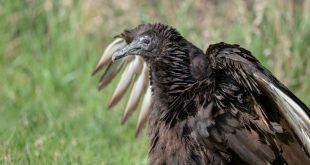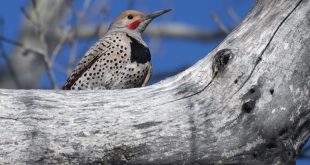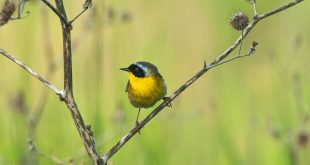In my recent post about attracting hummingbirds, I briefly mentioned how incorporating certain plants into your yard will help attract hummingbirds. I stated it was perhaps the subject of another blog post, and so it is. Below, I list four plants that hummingbirds seem to favor based on my experience. Their hummingbird appeal is just one factor in my determination. I also considered ease/difficulty of growing here in Nebraska and also just my own personal preference for the plants’ aesthetic appeal. I only consider plants that are in bloom during the late summer/early fall hummingbird season; spring blooming plants are not covered in this post. I also recognize that it is too late this year to plant any of these to do any good. However, many gardeners make their plans for next year well in advance. Enough of the caveats and conditions, here is my list.
- Black-n-blue Salvia (Salvia guaranitica) – This annual is easily the most favored hummingbird plant I have grown. Sphinx moths love it, too, and it is a stunning addition to any yard. It requires a little more care (water) during dry periods compared to the next two selections, but is a relatively easy plant to grow. It can be a little difficult to find, but more and more nurseries and garden centers seem to be including it their selections each year. Also, it can be a little expensive for an annual, but I consider it well worth the price.

- Hummingbird mint (Agastache spp.)– It seems natural that a plant often called “hummingbird mint” is on the list. Also referred to by the genus name, agastache, varieties include rupestris, aurantiaca, and sinning. These varieties are somewhat similar in appearance and are pictured in the photograph, below. Agastaches are often advertised as perennials, but in my experience they rarely last more than a single season. Even as annuals, I give them my thumbs up. All varieties are easy to grow and require little watering.

- Salvia coccinea – This is an inexpensive and easy-to-find annual. Depending on the variety, flowers may be red, pink or white. It seems to do well in both full sun and partial shade. It is very easy to grow, requires little extra care and seems determined to bloom profusely regardless of moisture conditions. I have also found that it is as easy as dirt to grow from seed. Thus, incorporating Salvia coccinea can reduce future plant expenditures if you collect seeds in the fall and cast them upon the soil the following growing season.

- Coral Honeysuckle (Lonicera sempervirens) – This is a perennial woody vine with tubular flowers. My first hummingbird of 2014 seemed to favor flowers on this plant. Flowers may be yellow-orange, such as in the picture below, or red. If you have a vertical structure that begs for a vine, this is a fine choice.

There are my top four hummingbird plants. A few selections that just missed the list include Cardinal Flower (native perennial), Royal Catchfly (native perennial), Great Blue Lobelia (native perennial), petunias and hollyhocks. One of my key rules of thumb for my yard is diversity. In addition to plants for hummingbirds, I like to include many native plants that will attract pollinating insects. One final qualification, this list is based on my experiences and I am sure I am overlooking some excellent plants hummingbirds favor. If you have had success with a plant not mentioned, here, let me know by commenting.
Good birding!
 Nebraskaland Magazine
Nebraskaland Magazine




